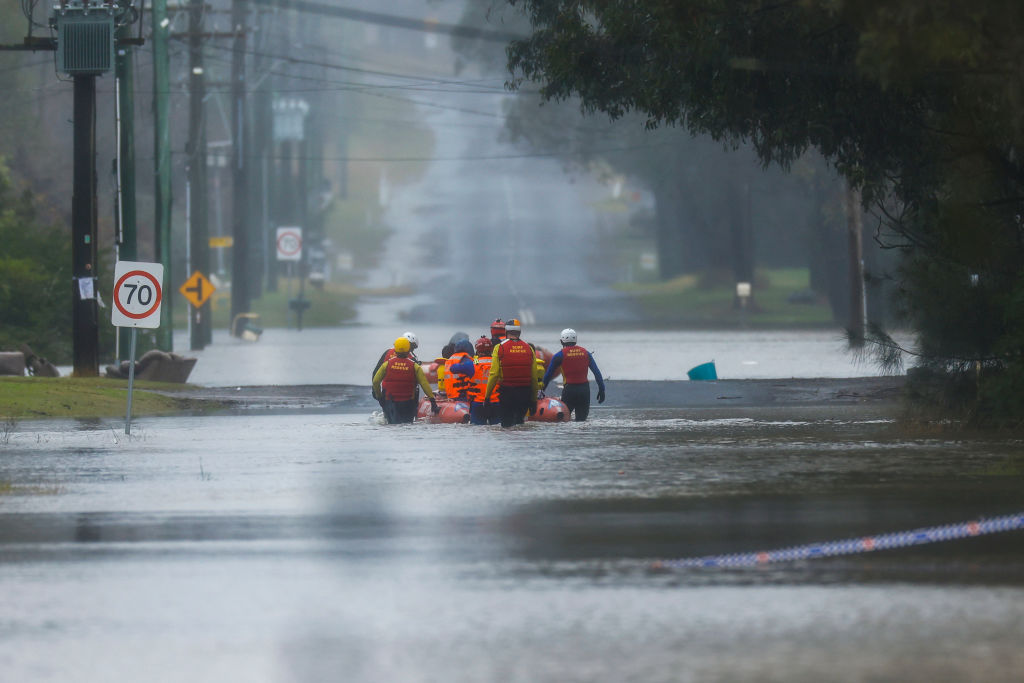
The most consequential gap in the climate policies of the Coalition government under Scott Morrison was not its weak commitment to reduce greenhouse gas emissions or its reluctance to accelerate the transition from fossil fuels to renewables, but rather its neglect of the security threats posed by climate change.
Prime Minister Anthony Albanese’s government moved quickly to address this gap by ordering an ‘assessment of the implications for national security of climate change’. The review will be led by Andrew Shearer, the director-general of the Office of National Intelligence, working closely with the Department of Defence. The review team faces a daunting task.
Climate change is a pressing and accelerating threat to global security. It will disrupt trade, displace populations, cause food and energy shortages, and drive conflict between nations. Southeast Asia, on our northern doorstep, is particularly at risk. It’s a global hotspot of overlapping climate hazards with large, densely concentrated populations (275 million people live in Indonesia alone), significant informal economies and weak social safety nets.
The review is a critical first step in preparing Australia for the dangers ahead, but to be successful it needs to avoid five key pitfalls.
The first is a tendency to define national security too narrowly. There’s no doubt that climate change will have enormous impacts on our defence force, including threatening military infrastructure and readiness. It will also exacerbate tensions in military hotspots such as the South China Sea, where sea-level rise will amplify disputes over maritime boundaries and fisheries.
But the most pressing regional security threats will come from climate-change-induced disruptions to social systems. Particular attention needs to be paid to the food–water–energy nexus. Identifying the climate risks and Australian responses in areas such as food and energy will require the involvement of a wide range of government departments, including many that are outside the traditional national security portfolios of defence, foreign affairs, home affairs and the national intelligence agencies.
The review also needs to consider the links between climate risks originating outside of Australia and domestic impacts. The possibility of initiatives such as establishing a civilian national disaster response force to free up the defence force to meet intensifying military threats abroad, which was mooted by Labor defence spokesperson Brendan O’Connor during the election campaign, would be missed in a risk assessment that was too outwardly focused.
A third pitfall is to underestimate the systemic nature of the climate-change threat. That’s one reason maritime Southeast Asia has been overlooked as a climate-change hotspot. Most analysis of climate impacts tends to focus on individual hazards rather than on the systemwide effects.
For example, a study might examine how rising temperatures will reduce food production, but not the compounding impacts of other hazards—such as flooding, drought, fires, increases of pests, saltwater inundation, cyclones and migration—all of which will be occurring simultaneously as the climate warms. It’s analytically difficult to do this and to take account of how hazards can trigger other disruptions and cause cascading impacts—and responses—across society. Unless the risk assessment grapples with this reality, it will fundamentally misjudge the scale of the challenge we face.
The review also needs to avoid miscalculating how quickly major societal impacts will begin appearing. We tend to assume that the pace of climate change we’ve experienced in the recent past is what we can expect in future. In fact, impacts are now increasing in a non-linear fashion. Extreme heat events, for example, have mushroomed 90-fold over the past 10 years, relative to the 30 years from 1951 to 1980. Severe, one-in-100-year floods will become annual events in many parts of the world in the decades ahead. These changes are even now beginning to appear in Southeast Asia, where sea levels are rising at the fastest pace globally. Around 75 million Indonesians are already exposed to high flood risk.
Albanese has said that the review needs to be completed within four months (although he has committed the new government to regularly updating it). Meeting that deadline will require some shortcuts to be taken. The fifth pitfall the review team must avoid is the temptation to oversimplify the process.
It would be unfortunate, for example, if the final report was just a collection of responses of government departments to a series of common questions. That was essentially the approach of President Joe Biden’s administration in the US. The result was a patchy assessment of uneven quality with little whole-of-government integration.
Climate risks don’t fit neatly into bureaucratic silos. Ideally, the process should begin with consultation across government to identify the key objectives, such as securing borders, ensuring energy security, tackling transnational organised crime, and countering terrorism and violent extremism, many of which will fall within the mandates of multiple government departments. These national objectives would be the reference points for the review, and relevant government agencies would work together to identify the risks and responses.
One topic that will certainly feature prominently in the assessment is China’s regional trajectory—which can’t be understood separately from the risks posed by climate change. It’s critical for Australia to develop a deep and nuanced understanding of how China’s actions are shaped by climate considerations, or, conversely, how climate change may affect Australian efforts to compete (or cooperate) with China in the region. The risk assessment should lay the groundwork for that important longer-term effort.
Historian J.R. McNeill recently observed, ‘There is no precedent in human history for a global disaster that affects whole societies in multiple ways at many different locations at once.’ This is the core challenge for Shearer and his interdepartmental team. Climate threats exist in every direction, domestically, regionally and internationally. It will take exceptionally good judgement and execution to ensure that the review avoids becoming, at one extreme, a platitude, and at the other, mired in complexity.
Australia’s national security depends on getting it right.

